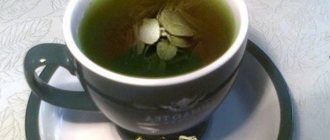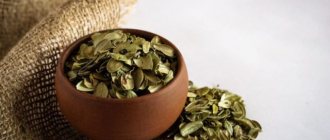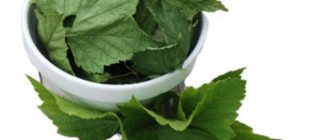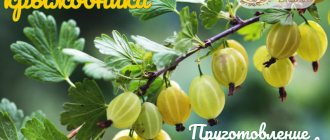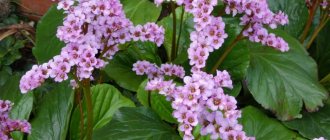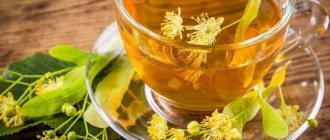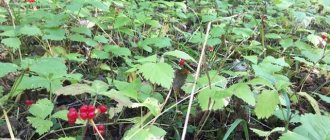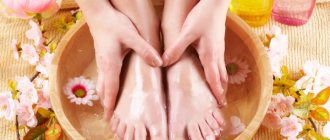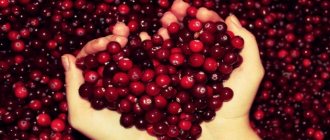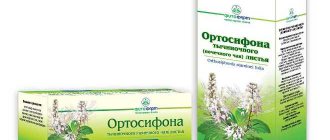The healing properties of lingonberries and benefits for the human body
Pharmaceutical name: lingonberry leaves.
Plant parts used: leaves and berries.
The high healing properties of lingonberries are explained by the presence of biologically active substances in the plant.
The various parts contain:
- avicularin - leaves;
- arbutin - stems, leaves;
- benzaldehyde (benzoaldehyde) - essential oil of a plant, fruit;
- benzyl benzoate - fruits;
- benzoic acid - fruits;
- borneol - essential oil of the plant;
- vitamin PP (nicotinic acid) - fruits;
- hyperin - leaves;
- camphor (camphor);
- carvacrol;
- linalool - essential oil from the fruit;
- methyl salicylate - fruits;
- pectin - fruit;
- alpha-, beta-pinenes - essential oil of the plant;
- rutin - leaves;
- salicylic acid - fruits;
- terpineol - essential oil from fruits;
- thymol - essential oil of the plant;
- ursolic acid - leaves;
- ferulic acid - leaves;
- chlorogenic acid - leaves.
In order for lingonberries to bring health benefits, raw materials must be harvested within a certain time frame.
Harvesting time: berries - August-September, leaves - March-July, October-November.
Collection: collect old, overwintered leaves (March-June) or new leaves after fruiting (October-November). At the same time, whole shoots are cut off. The leaves, and separately the shoots, are laid out in a layer of 3-5 cm and dried under a canopy or in dryers at a temperature of 35-40°C, stirring occasionally. The beneficial properties of lingonberry leaves for the body last for three years. Ripe berries are dried in the usual way, or poured with sweetened boiled water (soaked lingonberries), or frozen.
To enhance the diuretic effect, lingonberry leaves are prescribed in a mixture with other plants that have diuretic properties.
A decoction and infusion of lingonberry leaves is used for nephropathy and edema in pregnant women, for diabetes mellitus in pregnant women, as an adjuvant for pyelonephritis in pregnant women and in the postpartum period.
Inhalations and aerosols from a decoction of lingonberry leaves are used in complex therapy for chronic pneumonia, bronchiectasis, and bronchitis.
Aerosols of lingonberry leaves have a negative electrical charge, which is believed to provide an additional healing effect.
Also indications for the use of lingonberries are urolithiasis, pyelonephritis and cystitis. To treat these diseases, fresh berries, juice and jam are prescribed.
Lingonberries are used to quench thirst in patients with high fever in the form of lingonberry water, fruit drink or syrup.
Juice from berries, fresh berries are indicated for hypertension, and are also recommended for improving visual acuity.
For tuberculosis, the berries are consumed mixed with oatmeal and honey.
Lingonberry tea and lingonberry tincture have long been used for gout and arthritis of metabolic, rheumatoid, infectious and nonspecific origin.
In folk medicine, an infusion of lingonberry leaves along with St. John's wort is given to children for bedwetting.
Lingonberries are highly beneficial for humans and when used for food purposes. The berries are eaten fresh, candied and made into candies, used for fruit drinks, jam, marinade, fillings for candies, pies, pies and cakes.
The berries are also used in the preparation of liqueurs and tinctures.
Berry sauces are prepared for meat dishes.
Lingonberries provide a supporting bribe to bees and are valuable because they bloom even in cold springs.
Below we describe how to use lingonberries for medicinal purposes.
Medicinal properties of lingonberry leaves
When properly prepared, natural raw materials are effective for the treatment of infectious and inflammatory processes of the urinary system. Other pharmacological properties of lingonberry leaves:
- normalize bile production;
- restore immunity;
- eliminate symptoms of vitamin deficiency;
- removes intoxication products from the body;
- restore strength after poisoning;
- provide an anti-inflammatory effect for the skin and mucous membranes;
- restore tissue at the cellular level (astringent property);
- act as a sedative for insomnia and weather dependence;
- provide a diuretic effect, eliminate swelling;
- reduce body temperature during acute respiratory viral infections, influenza, and infectious diseases;
- relieve allergy symptoms during long-term treatment with medications and exposure to allergens;
- provide antifungal and antibacterial effects against sensitive pathogenic flora;
- increase efficiency and vitality of the body;
- disinfect and quickly heal wounds;
- reduce high blood pressure, cholesterol;
- provide prevention of neoplasms of various origins;
- destroy helminths and their eggs;
- improve intestinal motility, normalize the acidity of gastric juice;
- increase hemoglobin in the blood, prevent iron deficiency anemia.
Scope of application in official medicine
The raw materials are used for the production of choleretic, disinfectant, and diuretic drugs. Due to their pronounced diuretic effect, lingonberry leaves are used in urology and nephrology. They are prescribed for urolithiasis, cystitis, pyelonephritis, prostatitis, nephropathy in pregnant women. The medicinal properties of lingonberries are used in cardiology for diseases of the heart and blood vessels. Other indications for use:
- joint diseases, osteochondrosis, arthritis, gout, radiculitis;
- fungal, viral infection (including herpes);
- parasitic diseases: giardiasis, helminthiasis, ascariasis, etc.;
- allergies of various origins;
- type 2 diabetes mellitus, hypoglycemia, obesity;
- gastritis, enterocolitis, diarrhea, dysbacteriosis;
- uterine bleeding;
- stomatitis, gingivitis, other inflammatory processes in the oral cavity;
- oncological diseases;
- ARVI, acute respiratory infections, colds, flu;
- seasonal, year-round vitamin deficiency;
- dermatoses, alopecia, skin rash, urticaria, seborrhea, acne;
- tuberculosis;
- neurosis, chronic stress, depressive states;
- prostatitis, prostate adenoma (treatment and prevention).
Article on the topic: Features of using the antidepressant Asentra: instructions, reviews
Use of folk remedies in recipes
In alternative medicine, dried lingonberry leaves are used to prepare medicinal tea, decoction, and water infusion. Natural raw materials are used externally - as compresses and rubs. Lingonberry leaf helps with many diseases:
- increases visual acuity;
- eliminates cough;
- reduces the risk of developing tumors.
Recipes with lingonberries are used even for tuberculosis.
Contraindications
Decoctions of lingonberry leaves have the ability to wash calcium out of the body, so when taking the drug it is recommended to monitor the condition of your teeth.
In addition, it is forbidden to consume lingonberry leaves if:
- breastfeeding;
- children under 18 years of age;
- acute renal failure;
- for heart diseases associated with heart rhythm disturbances;
- individual intolerance to a medicinal plant;
- peptic ulcer of the stomach and duodenum, various bleeding from the gastrointestinal tract;
- gastritis with high acidity;
- with low blood pressure;
- varicose veins, blood clots in blood vessels;
- tendency to internal bleeding, various typologies.
Drinks made from lingonberry leaves should be taken strictly as directed and under the supervision of a doctor. The arbutin contained in the plant, in case of overdose, can cause severe intoxication.
Contraindications
Lingonberry leaves are considered not only effective, but also safe. If all recommendations for the preparation and use of decoctions and infusions from lingonberry leaves are strictly followed, no side effects will occur.
Decoctions of lingonberry leaves can be taken by pregnant women and nursing mothers, as well as children over 7 years of age.
The only contraindication to the use of lingonberry leaves is considered to be individual intolerance, which is very rare.
Persons suffering from increased acidity of gastric juice and hypotension should take decoctions and infusions of leaves with caution.
Indications, contraindications and warnings
Complex therapy using decoction and infusion of lingonberry leaves is recommended:
- for diseases of the urinary system (pyelonephritis, urolithiasis, cystitis), these diseases are treated with antibiotics, the use of lingonberry decoction reduces the negative effect of taking them, helps eliminate excess fluid and salts;
- dental diseases of the oral cavity, gums (stomatitis, periodontal disease);
- hypertension;
- diabetes mellitus;
- joint diseases;
- osteochondrosis;
- cardio diseases.
Lingonberry leaves help against ENT diseases and are taken for laryngitis, laryngotracheitis, nasopharyngitis, and tonsillitis. During pregnancy during late toxicosis, tea made from lingonberry leaves helps alleviate the condition. It is necessary to drink healing tea in reasonable quantities and take breaks. There are no contraindications both during pregnancy and breastfeeding, but women should definitely consult a doctor.
In addition to the benefits, lingonberry leaves have some contraindications. A decoction of lingonberry leaves has a bitter-astringent taste. It is not recommended to take if you have an individual intolerance or allergic reactions to substances contained in lingonberries.
The drug should not be taken for a long time; prolonged use can cause chronic intoxication with hydroquinone. In addition to contraindications, there are restrictions on use in patients with high acidity. Hypotensive patients should take decoctions carefully. Since lingonberries have a diuretic effect, they can cause a decrease in blood pressure. Due to their tannic properties, tea and decoctions from lingonberry leaves should be drunk carefully if you have kidney problems.
Use of lingonberry leaf during pregnancy
- Since lingonberry leaf is a potent remedy, you should consult a doctor before using it. In some cases, the use of lingonberry leaves during pregnancy is contraindicated due to the ability of this remedy to tone the entire body, including the uterus.
- Starting from the eighth month of pregnancy, lingonberry leaves can be consumed to relieve swelling.
- In case of severe nausea, vomiting and poor health, a small dose of infusion or tea from lingonberry leaves will help relieve the symptoms of toxicosis. Instructions for use are included in the pharmacy package; you can also consult your doctor.
- Pregnant women with diabetes are not prohibited from taking lingonberry leaves, but only if prescribed by a doctor and in compliance with all his instructions.
- During lactation, it is better to refrain from taking lingonberry leaves: the active substances of the drug entering the baby’s body through breast milk can harm his health.
Losing excess weight
Lingonberry leaves are used both independently and in combination with other herbs to lose excess weight. The effectiveness of treatment is based on the removal of excess fluid from the body. Due to the high concentration of substances such as glycosides, decoctions and infusions from the plant activate the functioning of the kidneys and bladder.
Unlike chemical-based drugs, lingonberries do not remove fluid as quickly, and the likelihood of irritation and inflammation is not so high. In a month of using the decoction you can lose about 3 kg.
Recipes for weight loss
To prepare infusions for weight loss, you do not need to be a great expert in traditional medicine; it is enough to observe the required proportions and follow the instructions.
Recipes for weight loss can be different, here is the first option:
- For 40 g of leaves, take 200 ml of water. The broth is prepared by steaming.
- The leaves are placed in a pan, filled with cold water, which is brought to a boil.
- The remedy is boiled for 10-20 minutes, then the broth is cooled.
Take half a glass 20 minutes before meals. If you don’t know exactly how many days to drink the decoction, then the course duration is 1 month.
The second method of preparing the decoction consists of the following steps:
- You need to take 2 tbsp. l. lingonberry leaves and 1 tbsp. l. linden flowers.
- Fill them with 300 ml of hot water, not yet boiling.
- Let the mixture brew in a thermos.
Take 100 ml infusion 30 minutes before lunch and dinner. If the effect is low, then the product is consumed before breakfast.
A third recipe for weight loss based on lingonberry leaves is also used:
- Dry senna is mixed with lingonberry leaves and fireweed leaves in a ratio of 1:2:1.
- At the station l. Take a glass of boiling water with the herbal mixture. It should be left for 10-12 hours. The product is prepared in a thermos.
This infusion increases intestinal motility and drives urine. Drink 100 ml of the drug before meals.
Application for hair
An infusion of lingonberry leaves is used not only for medical, but also for cosmetic purposes. When you use it on your hair instead of conditioner, you will get soft, shiny, manageable curls, and also get rid of dandruff and hair loss.
Thus, lingonberry is a universal plant, the value of which is not limited to tasty fruits. Lingonberry leaves can be a good helper in the fight against a large list of diseases. So that you do not encounter problems when using this medicinal plant, we examined in detail the beneficial, medicinal properties and contraindications of lingonberry leaves, as well as what all kinds of recipes using them help with. With the right approach, healing with the help of medicinal plants is not much more difficult than with the help of synthetic drugs, but you will certainly be able to avoid side effects.
Possible side effects and contraindications for taking lingonberry leaves
Lingonberry leaf is dangerous due to the toxicity of large quantities of arbutin and its derivative into which it is converted in the body - hydroquinone. With approximately the same frequency with which these substances have a therapeutic effect, they also cause undesirable side effects: in mild cases - nausea, vomiting, abdominal pain, diarrhea, malaise, in severe cases - severe poisoning requiring hospitalization of the patient.
In addition, the taste of decoction and tea based on lingonberry leaves is not very pleasant (the products are bitter), which can additionally increase nausea in the patient. Such products have virtually no odor.
Due to the high probability of such poisoning, any preparations based on lingonberry leaves are contraindicated for children under 12 years of age (especially infants!), pregnant women and breastfeeding mothers. In exceptional cases, the doctor allows the drug to be given to the child 1-2 times to obtain a pronounced diuretic effect.
By the way, lingonberry leaf is dangerous for pregnant women because it can tone the muscles of the uterus. This action can cause miscarriage in early pregnancy (mainly in the first weeks) or premature birth in the third trimester. And although the likelihood of such an outcome is much lower than, for example, when using chamomile, it exists and complements the severity of the contraindication of the drug during pregnancy.
Also, lingonberry leaves, due to the content of a large number of biologically active substances, can cause allergies, and sometimes quite severe ones, up to angioedema and anaphylactic shock. Cases of such complications are very rare, but they should be taken into account by those who experience adverse reactions after eating lingonberries, cranberries or blueberries.
Even if lingonberry leaf causes an allergy, it is usually not severe and manifests itself only as a slight rash on the skin.
Finally, some side effects are directly related to the medicinal properties of the leaves and are their “downside”. In particular, these are:
- Reduced blood pressure, dangerous for hypotensive patients. As a result, if you have low blood pressure, you should not take medications with lingonberry leaves;
- Severe pain during exacerbations of cystitis and prostatitis associated with increased urination;
- Deterioration of the condition of patients in whom this or that disease leads to frequent urination;
- Deterioration of the condition of patients with enuresis, in whom manifestations of urinary incontinence increase due to the action of the drug. Consequently, enuresis is also a contraindication for taking lingonberry leaves.
Kidney diseases in different cases can be both indications and contraindications for taking lingonberry leaves.
Thus, you should not take such drugs in case of acute inflammation of the kidneys, the formation of large stones in the kidneys, chronic glomerulonephritis and renal failure in any form.
At the same time, for mild pyelonephritis, a cyst in the kidneys, or the presence of sand in them, lingonberry leaves can be prescribed by a doctor.
Likewise, urolithiasis can also be both an indication and a contraindication for taking lingonberry leaves. If the stones in the bladder are small and can be passed through the ureters, lingonberry preparations may be indicated. If there are large stones, taking such drugs is prohibited.
Finally, lingonberries should not be taken if you have cancer or the risk of developing it. Research shows that arbutin and hydroquinone are carcinogens that, in large quantities, can provoke and accelerate the development of cancerous tumors. Although the results of these studies are not yet entirely clear and additional checks are being carried out, for complete safety if there is a risk of developing cancer, drinking products from lingonberry leaves is not recommended.
Collection, preparation and storage
Traditional medicine uses mainly the leaf. The collection of lingonberry leaves is carried out at the end of summer and at the beginning of autumn, approximately around 10 o'clock in the morning. New recommendations regarding collection indicate a different time for harvesting - spring, when the leaves contain the greatest amount of active substances.
Harvesting for future use is carried out by drying. The lingonberry leaf is dried in the shade in a thin layer, with good ventilation. However, the most reliable results are achieved by drying in a heated room or using artificial heat at temperatures up to 40°C.
Properly dried lingonberry leaves have a dark green color and a tart taste. Under the right conditions (lack of moisture and sunlight), the shelf life is up to 3 years.
Who should refrain from using lingonberry leaves?
- Allergy sufferers and people intolerant to this biological component.
- People suffering from high stomach acidity due to gastritis.
- People with chronic low blood pressure.
- People suffering from acute renal failure.
- It is not advisable for children under 12 years of age to consume the product.
Lingonberry leaves have many beneficial properties that can be used to treat various diseases. However, the beneficial effect of using this medicinal collection occurs only if there are no contraindications and the instructions for use are followed. You can buy lingonberry leaves in special pharmacy preparations, or you can prepare them yourself at home.
Join the discussion!
We would be interested to know your point of view, leave your opinion in the comments
One of the best diuretics
Lingonberry leaf is rightfully considered a natural diuretic, as it effectively helps and does not cause side effects. Let's look at how to take lingonberries for various diseases. The foliage is used as a diuretic for cystitis, gout, prostatitis, rheumatism, kidney disease, liver disease and to eliminate swelling.
If there is sand in the kidneys and stones in the bladder, it is recommended to prepare the following infusion:
- Pour 50 grams of lingonberry leaves into a liter of boiling water.
- Leave for approximately 2 hours.
- Add 120 ml of vodka and keep the resulting product on low heat for 20 minutes.
- Drink 100 ml of tincture half an hour before meals 3 times a day.
Lingonberry is used as a diuretic for gout and cystitis in the following form:
- The tincture is prepared from 1 tbsp. leaves and 250 ml of boiling water.
- Combine the components and leave for 1.5 hours.
- Filter and drink 2 tbsp. 4-5 times a day.
If swelling is caused by liver and kidney diseases, then make the following tincture:
- Pour 20 grams of lingonberry leaves into 250 ml of boiling water.
- Leave for 1 hour, then strain through cheesecloth.
- Drink 1 tbsp. 3 times a day.
In what form, how best to use
Lingonberry leaves can be purchased at any pharmacy in the form of dried raw materials or prepackaged tea bags.
You can prepare lingonberries yourself - this plant is collected in an ordinary coniferous or mixed forest. Important :
- collect raw materials before or after the plant blooms - in April or September;
- When collecting leaves, they must be picked carefully without damaging their surface;
- dry the leaves in the shade in the open air or in a ventilated area;
- well-dried raw materials should not darken.
You can make your own medicines from dry leaves. Lingonberries are often consumed in the form of water rather than alcohol tinctures.
The maximum dosage for any dosage forms on water is 150-250 ml per day in several doses .
| Dosage form | How to cook | How to use |
| Decoction | Pour a glass of boiling water over a spoonful of raw materials and boil in a tightly sealed container for another half hour. | 2 tbsp. l. 3 times a day |
| Infusion | Pour a spoonful of raw materials into a thermos, pour a glass of boiling water, leave for at least 4 hours | Half a glass twice a day |
| Alcohol tincture | Pour a handful of dry crushed leaves with vodka, half diluted with water, leave in the dark for 2 weeks | 30-40 drops three times a day before meals |
| Tea | Mix a spoonful of dried lingonberries with mint and lemongrass, brew with boiling water, you can add honey and lemon | 1-2 cups per day |
About the healing properties, benefits and possible harm of lingonberry leaves, watch the video:
Find out all about the health benefits and harms of cherries, how to eat them and the recommended daily amount in a separate article.
The essence and principles of the Minus 60 diet, results and reviews, photos of those who have lost weight - everything about it is here.
Find out about the benefits of cilantro for the body and how to use it correctly here:
How to brew and take lingonberry leaves
The therapeutic effect of the leaves of the Siberian bush depends on the correctly selected brewing method and consumption rate. The following points are important:
- Compliance with dosage: the amount of lingonberry raw material should not be measured “by eye”. If the dose of a medicinal drug is indicated in scales, then you need to weigh the lingonberry leaves on a scale. Dosing in teaspoons or tablespoons makes measuring much easier.
- Compliance with the recipe: brew and infuse the herbal mixture according to the instructions.
- Compliance with the frequency and duration of administration. Only the recommended amount of the drink provides a therapeutic effect that can be beneficial. Children's doses are smaller and usually differ in concentration, which should be taken into account when preparing wild marsh leaves.
Since the lingonberry leaf is dense and leathery, decoctions are used to achieve a diuretic effect. In this case, all the necessary components are in high concentration in the solution. Herbal infusions are often prepared in the form of decoctions or teas.
Lingonberry infusion
To influence the medicinal properties of the diuretic infusion, use the following recipe:
- take 5 g of dried lingonberry leaves;
- steamed in 100 g of boiling water;
- insist for an hour;
- filter and divide into 4 portions;
- Take before meals during the day.
A vodka infusion is prepared from lingonberry leaves, which has a wide spectrum of action and is effective for inflammation of the genitourinary system and kidney diseases. The infusion also has a diuretic effect.
Lingonberry leaf tea
The benefits and harms of lingonberry leaf tea lean toward the benefit. It is not recommended only for hypertension and cholecystitis. In other cases, its medicinal properties appear. Tea is recommended in dietary nutrition for kidney diseases. His recipe is simple:
- 1 tbsp. l. dry leaves, pour 200 g of water and bring to a boil;
- boil for 15 minutes;
- strain and cool;
- take 1/2 cup 3 times a day.
Decoction of lingonberry leaves
The good thing about the decoction is that when boiled, all the necessary components are completely in solution. Since lingonberry leaves are leathery and dense, this method allows you to obtain a rich composition. It is especially useful when used as a single drug without other components.
You can prepare it in the following way:
- Dry leaves in the amount of 10 g are poured with 200 ml of water.
- Boil for 10 minutes (for the treatment of cystitis - half an hour).
- Cool and filter.
- Bring to 200 ml by adding water, green tea or rosehip decoction.
- Take 1 tbsp. l. before meals (for cystitis, drink ½ glass of warm medicine after meals).
The use of this recipe helps to soften and remove small pebbles and sand, cleanse the body of toxins and excess salts due to its diuretic effect.
Another healing property is the ability to cleanse the skin and tone it, strengthening the blood vessels of the face. The composition of a decoction of lingonberry leaves protects the epidermis from adverse environmental factors, creating a “protective shell” on the surface.
10 g of northern bush leaves are poured into 300 ml of water, put on fire and boiled for 8-10 minutes. Set aside and filter. Lingonberry is useful for the face as a natural cleanser and makeup remover. The decoction is added to tonics, lotions, and masks.
How to take lingonberry leaves. Recipes
For the kidneys
In case of kidney disease, it is recommended to take the following infusion to eliminate swelling:
- lingonberry leaves in the amount of 50 g. steam with a liter of boiling water, leave for 2 hours;
- add vodka (120 ml.) and keep on low heat for 20 minutes;
- take 1/2 cup up to 3 times a day before meals.
infusions with lingonberry leaves are an excellent anti-cold remedy and activate the body's defenses
For a cold
The leaves are considered an antiviral agent, help in the treatment of colds, and are useful during off-season epidemics as a prophylactic agent.
- the raw materials are crushed, 250 ml are added. boiling water, leave for 1/2 hour. Take strained according to Art. l. every 2-3 hours. It is good to add lingonberries, raspberries, linden flowers, and honey to the infusion.
For bleeding
An infusion of lingonberry leaves is a good hemostatic and fixative.
- mix a glass of cold water with two tbsp. l. dry leaves, keep in a water bath for 30 minutes;
- strain and drink 70 ml. 2-3 times a day
For pancreatitis
Pancreatitis is considered an inflammation of the pancreas; lingonberry leaves can, without overloading it, speed up the digestion and absorption of food, and stabilize the secretion of gastric juice.
- 2 tbsp. l. dry raw materials and 250 ml. keep the water on low heat for 10 minutes;
- accepted according to Art. l. up to 4 times a day.
ready-made pharmaceutical raw materials are of good quality and are suitable for preparing medicinal infusions
From pressure
The use of lingonberry leaves in folk medicine is aimed at preventing surges in blood pressure and its decrease in hypertension.
- A decoction of 1/4 liter of water and tbsp will help normalize blood pressure. l. with a pile of dry raw materials. Boil for a minute and let it brew. Take 2 times a day for a week.
For weight loss
There is mixed opinion on the positive effects of lingonberry leaves for weight loss. Some believe that the product can normalize metabolic processes, lower blood sugar, and have a diuretic and choleretic effect, which helps the process of losing weight. The following recipe works well for these purposes:
- 200 ml. boiling water and tbsp. l. the raw materials are combined and kept in a water bath for 15 minutes;
- let it brew for 40-50 minutes, filter and bring the volume of infusion to the original volume;
- take 1/4 cup before meals three times a day for 3 weeks.
Thanks to its diuretic and cleansing effect, taking products with lingonberry leaves helps you get rid of extra pounds
The opinion of others is that for losing weight it is important to maintain a stable water balance, so that the maximum amount of their breakdown products in the body is effectively excreted in the urine when breaking down fats. If a large amount of water is removed from the body, the utilization of fats and its breakdown products will slow down and the condition of the person losing weight will worsen.
It is much more rational to take more water, flooding the body with it and removing it in natural quantities. In this case, the weight loss process will be more effective and faster.
These are all theoretical assumptions, but the author would like to know the practical use of lingonberry leaves for weight loss. Please express your opinion and share your experience if you have any.
For hair
An infusion with lingonberry leaves is used to care for hair, it allows you to strengthen, give shine and a healthy look.
- 2 liters of boiling water and 100 gr. Infuse dry leaves, strain and use to rinse hair after washing.
How to brew and use
In pharmacies, lingonberry leaves are sold in packages of 100 g, crushed or in bagged form. You can prepare lingonberry leaves yourself. In the instructions for the medicinal collection you can find information on how to make an infusion.
The required amount of dry product (2 tablespoons or 4-6 sachets) is poured into a glass of warm boiled water, the container is placed in a larger saucepan and placed on low heat. The infusion should simmer in a water bath for 30 minutes. Strain the contents and squeeze the mixture well through cheesecloth. Add boiled water to the product so that the total volume of liquid is 200 ml. Warm infusion is drunk 1/3 cup three times a day.
The infusion is easy to prepare in a thermos. 10 g (2 bags) of raw materials are poured into 1 liter of boiling water and allowed to brew for 3-4 hours. Strain the solution, drink ?-1/3 cup.
Prepare the decoction according to the proportion: 1 spoon of leaves, a glass of boiling water. Place the container on low heat for 30 minutes, making sure the water does not boil. The broth is filtered, the leaves are squeezed out and 20-30 ml of water is added. The product can be placed in the refrigerator. Drink a third of a glass warmed three times a day.
When rheumatism worsens, prepare the following infusion: pour a teaspoon of the dry product with 100 ml of boiling water, wrap it up and leave to infuse for 2 hours. Strain the infusion, add a little water and drink ? glasses every 5-6 hours.
Recipes for medicinal decoctions
Let's look at a few basic remedies that can be easily prepared at home and used for various urological diseases.
Cooking methods
The therapeutic effect of decoctions on the body is almost identical, the only difference is in the method of preparation. The leaf must be brewed correctly so that it does not lose its healing properties.
For example, for urological problems, a decoction is prepared in the standard way, simply pouring boiling water over the required portion of raw materials and simmering for several minutes over low heat.
To normalize metabolism and increase immunity, the broth should not be boiled. Under the influence of high temperatures, vitamin C is destroyed and the drink becomes ordinary tea without medicinal properties.
Medicinal tea from lingonberry leaves can be brewed in a thermos. First, rinse the thermos flask with hot water, then pour a handful of leaves into it and pour boiling water over it.
The thermos must be sealed and left for 12 hours. In the morning, the healing infusion will be ready for use. To improve the taste, honey is added, since the decoction has an astringent taste with a bitter taste. This infusion is an excellent remedy for boosting immunity, a storehouse of natural vitamins.
For edema and nephritis
An infusion of dry leaf is recommended to reduce swelling caused by kidney disease. It has a positive effect on the condition of the liver and has a slight choleretic effect, namely: pour 20 g of raw material into a glass of boiling water, cover with a lid and set aside for 1 hour.
Strain and take in dosage: 1 tbsp. l. 3 times a day, in courses, until recovery. A fresh infusion should be prepared daily.
During cystitis
To relieve pain and inflammation in the urethra, a decoction of lingonberry raw materials is used as a diuretic, take: 4 tsp of dry crushed leaves, pour in 500 ml of clean water and boil for 20 minutes over low heat.
Leave for 30-40 minutes. Drink 100 - 150 ml 3 - 4 times a day before meals.
For cholecystitis and stones
You need 2 tbsp. crushed raw materials, pour 250 ml of boiling water, heat in a water bath for 30 minutes, filter and bring the drink with water to a volume of 250 ml. Use 1 glass before meals three times a day.
For pyelonephritis, prostatitis, arthritis, salt deposition
The healing drink is prepared at the rate of 10 g of dry raw materials per 100 ml of boiling water. Leave for 30 - 60 minutes. Drink 3-4 times a day, 1/2 cup.
For gout
Lingonberry leaf as a diuretic is consumed 2 times a day in the form of a decoction of 10 g of raw material and 200 g of water, which was boiled for 10 minutes. The optimal dose is 200 mg per dose.
For urinary incontinence in children
Mixture 1 tbsp. leaves and 1 tbsp. berries pour 0.5 liters of boiling water. Boil for 10 minutes and cool. Divide 250 ml of the decoction into several servings for use during the day, and take 200 ml before bed.
It is recommended to take medications containing lingonberry raw materials in courses.
The duration of the course is 10-14 days, then a break for 1-3 months and you can repeat taking decoctions or infusions.
What do lingonberry leaves help with?
To use a plant correctly, you need to know exactly what it helps with and how to prepare medicines based on it. Lingonberry leaves are used in the treatment of the following pathologies:
- as part of complex therapy for inflammation in the genitourinary organs - pyelonephritis, infectious inflammation in the bladder (cystitis), for the formation of stones in the urinary organs, for nephropathy in pregnant women, for inflammation of the prostate (prostatitis);
- in the treatment of dental infections - stomatitis, infectious periodontal disease, ulcerative destruction of the oral mucosa;
- in the treatment of diseases of the nasopharynx - sore throat of infectious origin, tonsillitis;
- as a therapy and prevention of pathologies of the myocardium and blood flow system - hypertension, disruption of the rhythm of myocardial function, with weakness and fragility of blood vessels;
- for pathologies of the digestive and respiratory organs (gastritis, disturbances of intestinal microflora, bronchitis, tonsillitis, acute respiratory viral infections and acute respiratory infections);
- in the treatment of viral diseases, including chickenpox and herpes;
- in case of impaired metabolism to regulate metabolic processes and restore lipid, carbohydrate and protein balance. Prescribed in the treatment of diabetes, hypercholesterolemia and atherosclerosis.
Application for women
For women during menopause, lingonberries help cope with severe symptoms - intense hot flashes and nervousness, as well as reduce excessive sweating and blood stagnation in the system. Also, decoctions of the leaves are used for painful urination or urine retention in the body.
Good to know! Infusions from the leaves are also useful during pregnancy - it significantly reduces swelling and also prevents the development of anemia in both the mother and the developing fetus.
Benefits for men
Prostatitis is one of the most common pathologies in men after 40 years of age. This disease not only brings discomfort and pain in the pelvic organs, but also contributes to the development of impotence. Prostatitis develops due to both genital and urethral infections, as well as due to low immunity, frequent hypothermia, prolonged sexual abstinence, and addictions.
Lingonberry foliage will help relieve a man from the symptoms of prostatitis due to the following properties:
- diuretic effect with disinfectant effect;
- anti-inflammatory effect and immunostimulating effect.
You need to drink lingonberry tea twice a day - 200 ml of boiling water, 12 g of crushed raw materials (leaves). Leave for 10-15 minutes. You can add organic honey or sugar.
Despite the medicinal properties of lingonberries, there are also contraindications for consumption for men:
- low blood pressure;
- stone disease of the kidneys, bladder.
You may be interested in: Sea buckthorn leaves - medicinal properties and contraindications, method of use and what you can drink from? Sea buckthorn is a small tree that grows up to 3 meters in height. Branches of a fruiting tree...Read more...
Rules for using lingonberry leaves for various diseases
Rules for the use of herbal remedies based on lingonberry leaves for various pathologies:
- therapy with medicinal infusions or decoctions is carried out in a course;
- for auxiliary treatment of inflammation in the respiratory organs, inhalations with concentrated decoctions can be carried out;
- for urogenital pathologies, it is recommended to use lingonberry infusions for douching;
- Lingonberry juice lowers blood pressure and has a beneficial effect on the epidermis, so it is added to masks to treat facial skin;
- decoctions of dry leaves are used to treat dandruff and strengthen hair follicles;
- tea made from lingonberry leaves and berries is recommended to be drunk daily for weight loss;
- dry leaves can be added to dishes as seasonings.
For high blood pressure
50 g of lingonberry leaves and inflorescences + 500 ml of water. Cook over very low heat for 20-25 minutes. Leave for 5 hours and filter. Take 100 ml three times a day.
For gout
100 g of dry leaves + 2500 ml of boiling water. Leave for 2 hours in a thermos. After filtering, add 200 ml of vodka to the infusion and place on very low heat for 15 minutes. Drink 100 ml three times a day 20-30 minutes before eating.
For kidney diseases
For the treatment of kidney pathologies, you can use the following infusion - 10 g of lingonberry leaves + 100 ml of boiling water. Leave for 2 hours and filter. Drink 1-2 tbsp three or four times a day. l.
For cystitis
For inflammation in the bladder, you need to take 1 tbsp. l. crushed leaves into 200 ml of boiling water. Leave for 60 minutes and filter. Drink 100 ml twice a day 20-30 minutes before meals.
For cholelithiasis
For gallstones or cholecystitis, you need to make the following decoction:
- 2 tbsp. l. leaves + 200 ml boiling water;
- boil in a steam bath for 30 minutes and leave for 60 minutes;
- filter and consume 70-100 ml twice or thrice a day.
You may be interested in:
Pomegranate - health benefits and harms of the fruit and its seeds Pomegranate is one of the main valuable winter fruits. It contains a storehouse of useful components for human...Read more...
For rheumatism
Using lingonberry bush leaves will help remove uric acid, which is the cause of almost all joint pathologies. Decoction recipe:
- 1 tbsp. l. crushed dry leaves;
- 500 ml water;
- cook over low heat for 15 minutes;
- let it brew for 3-4 hours and filter;
- drink 5 times a day, 100 ml.
For uterine bleeding
To reduce bleeding from the uterus, you can use the following recipe:
- 3 tbsp. l. crushed leaves + 500 ml water;
- simmer over low heat for 10 minutes and let the broth cool;
- After cooling, filter the liquid;
- divide the volume into 6-8 doses. Therapeutic course – 3 days.
Other recipes
There are several ways to prepare medicines from lingonberry leaves. Each drug has its own purpose.
Decoction
- Take 1 tbsp. l. dry leaves of the plant and pour a glass of boiling water.
- The mixture is placed on low heat, covered with a lid and brought to a boil. Boil for 30 minutes.
- The resulting broth is cooled, filtered through a strainer or gauze and squeezed.
- Boiled water is added to the original volume.
- Before taking the decoction, dilute it with water or green tea in a 1:1 ratio.
When treating the genitourinary system and removing stones, the product should be consumed warm, 125 ml 30 minutes before meals, and for preventive purposes - 60 ml once a day.
Preparation of the infusion
- 1 tsp is poured into a thermos. lingonberry leaves and pour half a glass of boiling water.
- The thermos closes. The mixture is infused for 3 hours.
- The resulting infusion is filtered and squeezed out.
If you have cholelithiasis, acute respiratory viral infection or a cold, it is recommended to take 2 tbsp. l. infusion 4-6 times a day, and for rheumatic lesions, 125 ml every 6 hours.
Many people are interested in how to prepare a decoction for swelling, how to take it? In this case, on 1st. l. dry leaves take 200 ml of boiling water. The mixture is poured into a thermos and left for 30 minutes, then filtered. The infusion is consumed in a third of a glass before meals.
Making tea
To brew tea:
- Take 2 tbsp. l. dry leaves, which are poured with 1 liter of boiling water.
- The pan is closed and wrapped in cloth for 10-15 minutes. This way the mixture brews well.
- The resulting liquid is filtered. You can add honey to it.
Tea made from lingonberry leaves is suitable for women expecting a child. It improves the functioning of the immune system and gives the body vigor. The drink is consumed 3-4 times a day.
How to brew lingonberry leaves
Healing raw materials are potent remedies. Failure to follow the instructions for use and exceeding recommended doses can cause harm to health. Arbutin is converted in the body to hydroquinone, which is toxic in high concentrations. If the dosage of medicines based on herbal raw materials is not observed, the patient experiences nausea, vomiting, and indigestion.
Lingonberry has a diuretic effect. With urine, calcium is removed from the body faster, which leads to dehydration. Depending on the purpose of treatment and medical indications, lingonberry-based products are prepared in different ways. Rules of application:
- Carry out home treatment for a 10-day course, then take a break for 1–2 months.
- Combine lingonberry tea with honey, lemon, mint.
- Take the medicine on an empty stomach, otherwise the therapeutic effect will weaken.
- Store the remaining broth in the refrigerator, covered, for no more than 2 days.
Methods for preparing decoction and infusion
A medicinal decoction of lingonberries is used for diseases of the urinary system, for treating the skin, and rinsing the mucous membranes. Cooking method:
- Grind the dried leaves.
- Pour 1 tbsp. l. raw materials 250 ml boiling water.
- Place in a water bath for 30 minutes, do not bring to a boil.
- Cool the broth, strain, squeeze out the leaves.
- Add boiled water to the resulting concentrate to a total volume of 250 ml.
An aqueous infusion of lingonberry leaves is used in the treatment of diseases of the digestive tract, to eliminate the symptoms of colds, flu, mastopathy, and joint damage. Cooking method:
- Pour in 1 tsp. crushed raw materials 125 ml boiling water.
- Leave in a thermos for 3 hours.
- Cool, strain, squeeze out the leaves.
- After 6 hours, prepare a fresh portion of the medicine.
Lingonberry tea
A tonic, restorative, soothing tea is prepared from lingonberry leaves. The medicinal drink helps relieve swelling, relieves symptoms of colds and flu. A drink is prescribed if the patient is emotionally unstable. Cooking method:
- Pour 2 tbsp. l. dried raw materials 1 liter of boiling water.
- Cover the container with a lid and wrap it in a warm towel.
- Let the mixture sit until it reaches room temperature.
You can add 1 tsp to cooled tea. honey It is recommended to drink the drink 1 glass up to 4 times a day.
Recipes for using lingonberry leaves in folk medicine
Treatment of cystitis
Many women in winter experience a disease such as cystitis.
Inflammation of the bladder causes discomfort and is very dangerous; it is very important to start a timely course of treatment. Lingonberry is an excellent prevention of cystitis and a woman’s first assistant when the disease occurs.
Recipe No. 1
Crushed lingonberry leaves (1 tablespoon) must be poured with a glass of boiling water and left for 1 hour in a dark place. The resulting drink is filtered and consumed in 3 doses during the day. Definitely before meals.
Recipe No. 2
The following ingredients are mixed: lingonberry leaves (3 parts), sage, violet and dandelion (2 parts each), chamomile and mint (1 part each). The dry mixture is mixed, 1 tablespoon is taken and 0.5 liters of boiling water is steamed in a thermos. You need to drink the drink 8 times a day, ¼ cup for 3 days, then 4 times a day, ¼ cup (another 3 days).
Treatment at home with lingonberries, the beneficial properties of which are beyond doubt, lasts no more than 7 days. In this case, you should definitely consult with your doctor and supplement the course with other medications.
Decoction for stomatitis and gum inflammation for rinsing
The dried leaves are poured with boiling water - 200 ml of water per 10 grams. Then you need to put everything in a water bath for half an hour. The broth is filtered, warm water (half a glass) is added to it. The product perfectly relieves gum inflammation. For the best effect, the rinsing procedure is repeated every 3-4 hours.
Vitamin tea to strengthen the immune system
Crushed lingonberry leaves are steamed with 0.5 cups of boiling water - the container is put in a dark place until it cools completely. It is recommended to drink this drink 2 times a day before meals. It retains many useful vitamins and substances that strengthen the immune system.
Improved metabolism
Dried lingonberry leaves (3 tablespoons) are poured into 500 ml of boiling water and boiled for 20 minutes in a water bath. The product should be allowed to cool in a dark place, then strain it. The decoction is drunk before meals 3 times a day, ¼ cup.
For rheumatism and gout
Medicinal raw materials have anti-inflammatory and mild analgesic effects, therefore they are recommended for relieving pain syndrome accompanying inflammatory processes in the joints.
Preparation:
- Grind the leaf, use one tablespoon;
- Pour two hundred milliliters of boiling water;
- Boil for five minutes;
- Leave to brew for one hour, strain.
It is recommended to take an analgesic and anti-inflammatory decoction four times daily, a tablespoon before meals.
Ways to use lingonberry leaves
- Infusion of lingonberry leaves - used for viral diseases: flu, colds, to strengthen the immune system and as a solution for gargling and mouthwash for colds and dental diseases. An infusion is prepared from 2 tablespoons of dry, crushed lingonberry leaves and 1 tablespoon of boiling water.
The leaves are poured with boiling water and infused in an enamel or glass container for 30 minutes. Afterwards the drink is filtered and cooled. Take the infusion 1-2 tbsp 3-6 times a day. To rinse the mouth and throat, the resulting solution is diluted 1:1 with warm water and used 4-6 times a day. The infusion is drunk until recovery, usually 3-7 days; - Decoction of lingonberry leaves - there are several types of decoction. The first is used to treat diseases associated with metabolic disorders, including joint diseases - rheumatism, arthritis, gout, diseases of the cardiovascular system and pathologies of the gastrointestinal tract; To prepare a decoction, 2 tablespoons of dry leaves are poured into 0.5 liters water, bring to a boil over low heat, cook for another 15 minutes, leave for 30-40 minutes and filter. Take a decoction of 1/2 tbsp 3-4 times a day for 14-20 days;
- Tea made from lingonberry leaves - you can drink it to prevent colds, to strengthen the immune system, for digestive problems, for swelling during pregnancy, for chronic fatigue and stress.
A drink made from lingonberry leaves quenches thirst, lowers blood pressure, and helps strengthen physical and mental health. To prepare tea, pour 2 tablespoons of dry leaves into 1 liter of boiling water, close and wrap the teapot, or brew tea in a thermos, leaving for 10-15 minutes. Drink tea warm, adding 1 teaspoon of honey or sugar, 3-4 times a day. Despite the healing effect of tea, drinking it for a long time is not recommended. Maximum - 14 days in a row, after which you need to take a break for 10 days.
Interesting facts about lingonberries
- In Latin, this species of plant is called the “vine of Mount Ida.” Nowadays it is a popular tourist island of Crete.
- Flowering of lingonberries begins in early summer and lasts only half a month.
- The berries of the plant tolerate low temperatures quite well. Once under a layer of snow, they do not lose most of their properties.
- Lingonberry bushes are not afraid of harsh climates. They can grow in the mountains and tundra.
- They tried to cultivate lingonberries in Russia in the 18th century. The attempt was unsuccessful. Results were achieved only in the 60s of the twentieth century.
- Cultivated berry plantations surprise with their productivity. Unlike their forest counterparts, berries on such plantations are harvested 30 times more. One hundred square meters pleases the farmer with 50–60 kg of selected berries per year.
- The berry is widely used in many countries around the world. It is used to make marmalade, candied it, make jam and various marinades, and dry it. Lingonberry jam is recognized as a national delicacy in Sweden.
- Regular lingonberry juice was mentioned by the great Russian poet A.S. Pushkin in the poem "Eugene Onegin". There this drink was called “Lingonberry water”. It was mentioned that the drink was stored in the cold, thanks to which all the beneficial properties were preserved.
- After collecting the leaves for three years, they can be used to prepare medicine. Scientific medicine has developed many tinctures and solutions based on lingonberry leaves. They are used as antiseptics.
- The lingonberry has a double - bearberry. They are almost impossible to distinguish.
- The lack of vitamins can be replenished with fresh lingonberries. The berry is an excellent choleretic, antiseptic and laxative.
- Decoctions from the leaves of the plant help in the treatment of many serious diseases (gout, diabetes, rheumatism).
- High blood pressure can be normalized by drinking lingonberry juice or fruit drink.
- The word lingonberry comes from the old Russian word “brusvyany”. In modern translation it means red.
- In ancient times, lingonberries were called a berry that harms the body of men.
- The life cycle of a lingonberry bush can be compared to such a mighty tree as an oak. And he lives about 300 years.
“Important: all information on the site is provided for informational purposes only. Before applying any recommendations, consult with a specialized specialist. Neither the editors nor the authors are responsible for any possible harm caused by the materials.”
